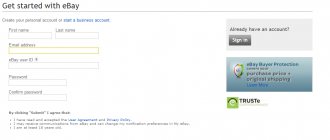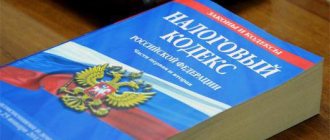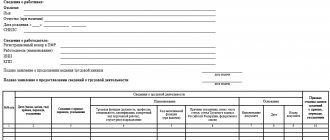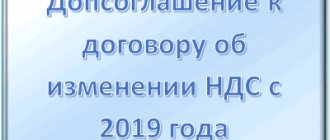When carrying out certain transactions, companies have the right to declare the application of a 0 rate for value added tax. In the article we will tell you how to confirm the 0 VAT rate when exporting to the customs union, and we will consider different situations.
Such operations include, for example, sales:
- goods in accordance with the established customs export procedure,
- services related to import/export.
Export is a customs procedure, as a result of which goods purchased in the customs union are exported outside the customs territory of the Customs Union and are not returned back. But you cannot apply a 0% rate at your own discretion - you will have to justify the legality of such an approach. To do this you need:
- collect the required set of documents,
- send to the Federal Tax Service a declaration with completed sections regarding VAT and prepared papers.
Accounting for VAT when exporting goods to the countries of the EAEU Customs Union
The members of the EAEU are:
- Russia,
- Belarus,
- Kazakhstan.
If goods are exported from Russia to one of the above countries, a delivery note must be drawn up, as well as an invoice, which would indicate a 0 VAT rate.
If VAT has already been offset for this product, it must be restored. VAT is deducted or refunded only after confirmation that the export has taken place.
When is VAT refund possible when exporting from Russia?
Commercial activities are closely interconnected with export operations. In part, this benefits the state, which strives to develop foreign economic activity. And this is understandable: the country is gradually filling up with foreign currency and its balance of payments is growing. Therefore, the state will always support export policy and encourage firms that supply goods and services abroad.
The tax legislation of the Russian Federation provides for one important benefit - a zero VAT rate, which makes it possible to carry out export operations very profitably. Judge for yourself how profitable sales abroad are if the rate is 0%? Yes, you can also deduct input VAT! In general, continuous advantages!
Indeed, from the tax side, export sales are very beneficial for businessmen, but most of them still continue to trade in Russia. This is explained by the presence of many inconsistent nuances in tax law, which minimize the effect of the zero rate for a number of entrepreneurs.
Only export transactions that are confirmed by the very fact of export and the actual crossing of the goods into the Russian border are entitled to a 0% rate. Only this category of taxpayers can count on a VAT refund when exporting from Russia. The fact of export of goods from Russia is certified by the customs service in the form of a special mark on a copy of the customs declaration.
When the tax authority receives a package of documents for VAT refund, it is required to conduct a regular desk audit within 90 days and return the amount of tax paid for the export of goods or refuse the taxpayer. In other words, make a positive or negative decision.
For a company that has provided the required documentation, the refund amount may be included in its debt payments (penalties, fines, bills, tax arrears), if any. Otherwise, funds from the VAT refund upon export will be transferred to the organization’s bank account. After a positive decision is made, the specified amount is returned to the taxpayer by the authorized bodies within 14 days. If this deadline is violated, additional interest will be charged on the refunded amount.
Zero taxation comes into force when:
- goods (except for oil, natural gas and gas condensate) exported to the territory of the CIS and registered under the export customs regime, subject to the transfer to the tax office of the documents mentioned in Article 165 of the Tax Code;
- services (work) directly related to the production and sale of goods.
Thus, exporting companies have the right to apply a 0% rate for any goods they export. Exceptions to these rules noted above (oil, natural gas and gas condensate) are subject to 20% VAT.
As for services (works) that fall under the 0% rate, these include support, transportation, loading (transshipment) of goods exported abroad. These and similar services (work) must be provided by workers and employees from Russia. In the case where a foreign carrier is involved, the EDT is charged in full.
0% VAT rate when exporting goods to the EAEU
Export to the territory of the EAEU is not recognized as export from the point of view of Russian tax legislation; however, union laws may establish a special taxation procedure. The provisions of the Treaty on the EAEU establish that:
- The export of goods for further sale by a tax payer from one country participating in the EAEU to another country participating in the EAEU is considered an export.
- When exporting within the borders of the EAEU, the tax is calculated at a rate of 0%.
- A 0% rate can be applied if the following are sent to the Federal Tax Service in the region where the exporter is located:
- tax return,
- export contract (photocopy),
- application for import and calculation of indirect taxes,
- transport papers proving the fact of export,
- papers indicating the receipt of income from an export operation (in Russia, the Tax Code does not require compliance with this paragraph).
- The deadline for sending documents to the Federal Tax Service is 180 days from the date of shipment.
- The day of shipment is the day the first primary document is drawn up by the accountant for the purchaser of the goods.
- The exporter can carry out tax deductions and offsets approved in the homeland.
- The application for a 0% VAT rate, deductions and refunds are considered confirmed following an inspection by Federal Tax Service inspectors.
| ★ Best-selling book “Accounting from scratch” for dummies (understand how to do accounting in 72 hours) > 8,000 books purchased |
New procedure for confirming the zero rate
VAT at a zero rate can be applied to trade operations within the framework of the export sale of goods (clauses 1, 8, clause 1, article 164 of the Tax Code of the Russian Federation). The norm also applies to the export of goods from Russia to the territory of any member country of the Eurasian Economic Union (including supplies in the form of fuel and fuels and lubricants). Services for the transportation of goods crossing international borders are levied at a preferential VAT rate.
In order for the application of a preferential tax rate to be recognized as legal, confirmation of a zero rate is required. For export transactions, the taxpayer only needs to provide the Federal Tax Service Inspectorate with a standard set of documents that can certify cooperation with a foreign company or with a separate division of a Russian company (if this separate structure is located outside the Russian Federation and outside the customs borders of the EAEU).
For VAT (export) to confirm the zero rate, a declaration from October 2020 can be submitted without accompanying transport documentation. The declaration and contract itself will be sufficient. This rule is valid provided that the taxpayer has submitted to the Federal Tax Service a list of applications for the import of products and payment of tax in electronic format. After receiving a set of documents, tax officials conduct a desk audit. If questions arise, tax authority specialists have the right to request from the taxpayer all documents or individual forms specified in the electronic list. It is necessary to respond to such a requirement within 30 days, otherwise the application of the zero rate will be considered unconfirmed.
Registries make it easier to confirm the zero rate electronically, as the list of mandatory documents for presentation to the Federal Tax Service is reduced. Another plus is the possibility of submitting documents requested by tax authorities without customs marks, if the forms submitted upon request were present in the electronic list.
The period for confirming the zero rate is limited to a 180-day interval. The countdown begins from the moment the product is placed under customs export procedures. Days are counted as calendar days (regardless of the number of holidays falling within this interval). When exporting supplies, the countdown begins from the day the customs authority affixes the appropriate mark when declaring supplies or from the day the shipping documentation is drawn up.
How to prove your rights to a 0 VAT rate when exporting
The list of documents that can be used to confirm the validity of calculating VAT at rate 0 is quite large. But it can be reduced to those that are needed in the case of export of goods that are not state-owned by conventional modes of transport. supplies:
- A copy of the intermediary contract (in case of sale through an attorney and other authorized persons).
- Transport, shipping and other papers with export marks (placed at customs).
- Customs declaration with relevant entries (placed at the customs office at the place of departure).
- A copy of the foreign trade contract between the VAT payer and the foreign buyer.
Registers of documents may be provided instead of photocopies. If the taxpayer fails to submit documents to the Federal Tax Service within 180 days, the Federal Tax Service inspection will carry out a desk audit within three months:
- the export transaction itself and all transactions for the corresponding period are checked;
- the supplier of goods for export is checked regarding the payment of VAT;
- it is checked whether the exporter can even engage in this type of activity (whether there is a license, employees, rented premises, etc.)
A company that was founded, reorganized, or changed its address in the six months preceding the transaction is subject to the most stringent inspection.
What documents are needed for VAT refund when exporting?
In order for the tax rate for export transactions to be reset to zero, you must submit all required documents and certificates to the tax service. These include:
- an agreement with a foreign person on the organization of goods supplies outside the Russian Federation;
- a bank statement confirming the receipt of revenue (profit) from a legal entity in another country;
- cargo customs declaration (a copy is possible) with a customs mark;
- transport, accompanying and other documents (copies) relating to the cargo, with a mark from the border service to confirm the movement of goods abroad.
If export operations are carried out through an agent, attorney or person who takes a commission, then the following documents are needed:
- commission (instruction, agent) agreement between the taxpayer and an authorized person or agent;
- a contract (or copy) between a person exporting goods abroad on behalf of the taxpayer and a foreign company (legal entity) on the supply of Russian goods abroad;
- bank statement (or copy) about the receipt of money from a foreign person to the taxpayer’s (agent’s) account in a Russian bank;
- cargo customs declaration (a copy is possible);
- transport, accompanying and other documents (copies) relating to the cargo, with a mark from the border service to confirm the movement of goods abroad.
It can be summarized that in order to apply a 0% tax rate, only the following facts need to be documented:
- existence of relations under an agreement on the export supply of goods or services (work);
- crediting funds under the export agreement to the taxpayer’s account;
- export of goods outside the territory of Russia.
Additionally, one general requirement of VAT deduction legislation must be met - payment by Russian suppliers of goods subsequently exported abroad.
In practice, taxpayers and regulatory authorities approach compliance with these requirements differently. It is obvious that tax services, trying to eliminate cases of false exports, sometimes go too far. This causes arbitration proceedings, which are mainly won by organizations and individual entrepreneurs.
Quite often there are disputes about confirming the receipt of money for the sale of export goods to taxpayers’ accounts in Russian banks. Tax authorities defend the opinion that payment for export products by a third party does not give the right to a 0% rate and VAT refund on exports. Here we need documentary evidence of actual payment for export goods by the buyer.
Is it possible not to declare a 0% VAT rate if there are no required documents?
Using a tax benefit is voluntary (if it does not contradict the law). But paying 0% VAT is not a benefit, but a mandatory requirement. When a company is exempt from tax, transactions do not need to be reflected in declarations and tax accounting, but in the case of VAT at rate 0 this does not happen.
A rate of 0 in this situation allows the exporter to subsequently apply VAT deductions. Accordingly, the exporter does not have the right to decide whether to accept a 0% rate or not. The law provides for only 2 cases: sending the evidentiary documentary base to the Federal Tax Service or the absence of papers.
Legislative acts on the topic
It is recommended to study the following documents:
| Document | Name |
| Chapter 21 of the Tax Code of the Russian Federation | About the application of the 0% VAT rate |
| Art. 151 Tax Code of the Russian Federation | When exporting goods from Russia, VAT is not paid or calculated |
| Art. 165 Tax Code of the Russian Federation | List of documents confirming the right to a 0% VAT rate |
| clause 15, clause 17 art. 165 Tax Code of the Russian Federation | On the possibility of providing registers of documents instead of copies of documents |
Sales of goods
We will sell goods using the document “Sales (acts, invoices)” with the operation “Goods (invoice)”.
In the document we indicate the VAT rate of 0%. We select an agreement with the buyer in a currency, in this case in dollars.
Typical design mistakes
Mistake #1. The exporter did not issue an invoice when exporting.
If the transaction is subject to tax and the exporter is required to pay VAT, the invoice is issued as usual. Read also the article: → “VAT on exports and imports: accounting for transactions.”
Mistake #2. The exporter believed that in order to prove the existence of grounds for applying a 0% VAT rate, the contract for the supply of goods for export is a document that cannot be replaced by other documents proving the fact of the transaction.
The contract with the supplier of goods for export can be replaced by other documents that would contain information about the agreement of the parties to the transaction with the terms of delivery (with prices, terms, subject of the contract). The papers must include the full name of the company of the seller and the buyer.
When to submit documents for 0% VAT
A transaction subject to zero VAT must be reported to the Federal Tax Service no later than 180 calendar days from the date the goods receive customs export status. If the taxpayer does not submit the above documents or copies thereof, export transactions will be subject to different VAT rates - 10% or 20%, depending on the category of goods or services.
If a late taxpayer nevertheless submits documents to the Federal Tax Service that confirm his right to a zero tax rate for VAT, the paid tax amounts will be returned to him. But for overdue time - from the moment of shipment to the date of actual confirmation of the validity of the zero tax rate, a penalty will be charged for each day of delay.
In addition, from 2020, exporters have the right to independently refuse, for their own reasons, the zero VAT rate. You can only refuse all export transactions at once.
Answers to common questions
Question No. 1. Will I have to issue an invoice when exporting within the EAEU?
The tax legislation of the Russian Federation does not require the preparation of this document, but the EAEU countries do. However, Russian exporters are not punished for failure to provide an invoice.
Question No. 2. What happens if the tax service does not receive documents confirming an export transaction for which a 0 VAT rate was applied?
VAT will be charged at a rate of 10% or 18%, and a penalty will be charged for the entire period of non-payment of tax from the date of shipment of goods. The paid VAT will be refunded after a desk audit (3 months will be counted from the last day of the period in which the Federal Tax Service received the necessary papers).
Generating VAT purchase book entries at zero VAT rate
It is by register movements that the program analyzes the state of VAT accounting. If you now create a purchase book, the required entry will automatically appear in it (Fig. 11).
Fig.11
The transactions generated in 1C by the document “Creating purchase book entries (0%)” show that the VAT we paid when purchasing goods intended for export was successfully deducted.
Fig.12








